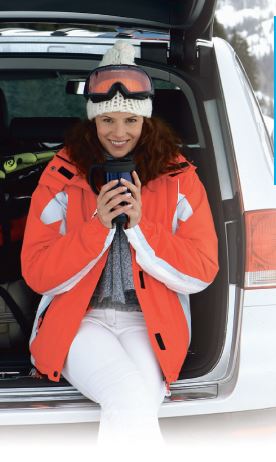 Cold weather and icy conditions can make winter driving diffcult.
Cold weather and icy conditions can make winter driving diffcult.
That is why it is so important to properly prepare your vehicle in anticipation of freezing temperatures.
Here are 10 steps to follow so that your car is ready for the challenges of winter.
- Change your tyres.
Winter tyres provide better traction on ice and the rubber is more effective in cold weather. Be sure to have them put on as soon as the weather starts getting colder — don’t wait for the first frost to do it. - Make sure the engine oil you use is suitable for winter use.
If it isn’t, change the oil before the weather gets too cold in order to avoid damaging the engine. - Add antifreeze.
The fluid in your radiator should contain 50 percent water and 50 percent antifreeze.
Use a test kit to ensure that this is the case or check with your mechanic. - Check your wipers.
Ensure that your wiper blades are in good condition and are not scratching the windshield. Fill up your windshield washer fluid reservoir and remember to keep an extra jug in the car; it will come in handy for long road trips. - Check the heating system.
Ensure that the heater and rear window defroster are both operating properly in order to avoid any unpleasant surprises. - Inspect your battery.
Ensure that the terminals and battery cables are clean and free of corrosion. - Check your tyre pressure.
The air pressure in your tyres can fluctuate in cold weather, so it is important to check it on a regular basis. Don’t forget to check the spare tyre as well. - Check the lighting system.
Check to ensure that both front and rear lights, as well as turn signals, are working properly. Replace them if necessary. - Have your car inspected.
Ask a mechanic to check your car’s brakes, spark plugs, suspension, and steering.
A minor defect could be aggravated by winter conditions, which would then entail higher repair costs. - Prepare a survival kit to keep in your car in case of breakdown or accident.
It should contain a first-aid kit, blanket, warm clothes, food, scissors, flashlight, shovel, and booster cables. This kit could save your life.
Stay further back from the vehicle ahead of you and brake earlier when stopping. Slow down more carefully before turning.
Preparing your car for winter is not enough. You also need to think about adapting your driving to winter conditions and bad weather.









